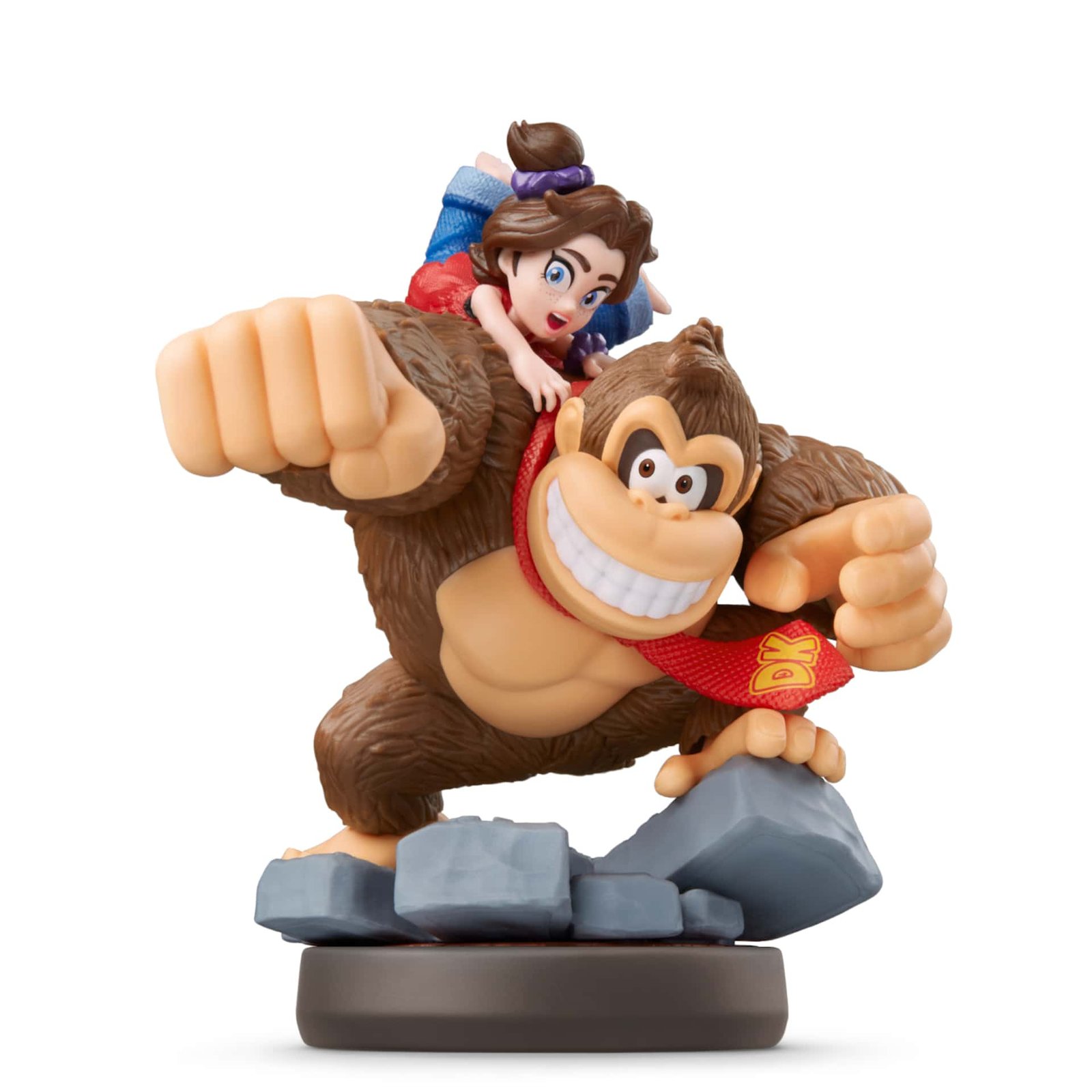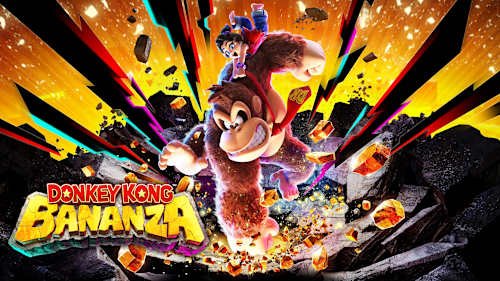With the launch of Donkey Kong Bananza on July 17, 2025, Nintendo has made its most daring and dynamic move in the Donkey Kong series since Donkey Kong 64 back in 1999. More than just a nostalgic throwback, Bananza is a full-blown reimagining that fuses sandbox-style exploration, voxel-based destructibility, and deep character development into one of the most innovative 3D platformers of the decade.
A product of Nintendo EPD, the same collective who previously created Super Mario Odyssey, Bananza reinvents the concept of Donkey Kong games. It is really not just about Banandium Gems or animal metamorphoses or a trip to the molten center of the earth or an unexpectedly sentimental collaboration between Donkey Kong and a teenager, Pauline, but, astonishingly, it is also about bananas. Hello to the underground of Ingot Isle, where power, imagination and spirit come together.
A New Kind of Adventure: The Power of Destruction
From the moment players take control of Donkey Kong, the defining trait of Bananza is immediately obvious—everything is breakable. Walls, ground, ceilings—if it’s not bedrock, it can be smashed, stacked, dug through, thrown, or even used to snowboard.
Such voxel-based destructibility is not only cool-looking, it is a switch of gameplay. The Banandium Gems are acquired in a very similar manner as the Power Moons of Odyssey: by completing challenges, puzzles or merely exploring and beating down the environment creatively. The land around you is your box of tools, to allow you to dig through secret tunnels, clear out pathways of enemies, or in some cases find buried treasures, all in a similar vein of Minecraft, but with a beautiful fluidity of a Nintendo game.
The Gameplay Loop: Exploration, Transformation, and Combat
The structure of Bananza feels familiar to Mario fans—but adds wild new layers. Donkey Kong explores vast underground biomes—lava lakes, frozen caverns, ancient jungles—each one layered vertically, guarded by titanic bosses and full of hidden gems, secrets, and NPC side quests.
Along the way, there is Pauline, who starts out as a masked stranger (the elusive Odd Rock) but turns into an essential gameplay and story companion. In the co-op, a second player is able to use Pauline to use projectile attacks, solve puzzles, and activate transformations of Donkey Kong with music. Her journey from being a mysterious stone to a confident singer is one of the most emotionally compelling tales that Nintendo has ever written in years.
The highlight? Animal transformations. These include:
- Zebra DK – Increased speed and dash ability.
- Ostrich DK – Can glide and drop egg bombs.
- Elephant DK – Used for strength-based environmental clearing.
- Snake DK – Enables slithering into tight tunnels or constricting enemies.
Transformations are limited by an energy bar and encouraged strategic usage, but they add creative traversal and combat dimensions.
Characters Old and New, and a Surprising Emotional Core
Bananza brings back beloved Kong family members—Cranky, Diddy, Dixie, and Rambi—each offering tips, side quests, or gameplay boosts. But it’s the unexpected character evolution of Pauline that stands out. Initially introduced to modern audiences in Odyssey, her deepening bond with Donkey Kong transforms her from a supporting NPC into the emotional heart of the game.
Her story becomes connected to the main mystery of the game, what exactly Banandium is, what the Banandium Root is and wished granting and how the mining corporation VoidCo. which is run by the intimidating Void Kong with his hench-kongs Grumpy and Poppy Kong behind him has corrupted it.
Starting with visually spectacular and text-heavy New Donk City battle, the game ends with Pauline receiving an ultimate choice between being a star and maintaining friendships but the final decision goes to leave the long-time fans of DK with a heartfelt tear in their eye.
Plot Summary at a Glance
Here’s a snapshot of the story arc in Donkey Kong Bananza:
| Story Arc | Summary |
| Arrival on Ingot Isle | Donkey Kong arrives for the Banandium gold rush, only to be dragged underground by VoidCo.’s meteor-powered drill. |
| Discovery of the Underground | DK meets Odd Rock, defeats bosses in themed underground layers, and awakens animal Elders granting transformations. |
| The Truth Revealed | Odd Rock is actually a transformed Pauline; they partner to stop Void Kong and his allies from reaching the Banandium Root. |
| Betrayal and King K. Rool’s Return | After Void Kong’s defeat, K. Rool emerges as the true villain and takes the Root, flooding New Donk City with Banandium goo. |
| Final Battle and Return | DK and Pauline battle K. Rool in New Donk City; peace is restored, and DK chooses adventure over fame, while Pauline begins her singing career. |
| Post-Game Adventure | A Warp Gong allows revisiting layers and new challenges. Pauline seeks help composing her next song, rekindling their journey underground. |
Technological Leap: Built for the Switch 2
Originally set to run on Nintendo Switch, Bananza ran into walls on terrain engineering and density in the environment. All this changed with Switch 2, which was made capable of a smooth 60 FPS, and also included increased environmental destruction alongside the support of a mouse to sculpt the terrain using DK Artist, a mode of voxel painting that runs on Joy-Cons.
It marks the most technology-oriented 3D platformer of Nintendo. Developers state that this move made the whole vision a reality. The destruction ability with explosions, the moving cameras to tunnel the ground—all was calculated to make Donkey Kong appear stronger and unlike the acrobats of Mario.
Nostalgia, Reinvented
While Bananza is bold and fresh, it’s also full of heartfelt nods:
- Side-scrolling minecart levels recall Donkey Kong Country.
- Reimagined Animal Friends, especially Rambi, offer both nostalgia and new mechanics.
- Remixes of David Wise and Grant Kirkhope’s music, including the hilariously infamous “DK Rap”, are beautifully blended into the soundtrack by Naoto Kubo and team.
- Even Pauline’s rise as a singer reflects the classic arcade roots of the franchise—connecting 1981’s Donkey Kong to today.
Amiibo, Customization, and Collectibles

Customization is another major draw. Donkey Kong and Pauline can don different outfits, unlocked by trading fossils found underground. The game’s support for Bananza-themed Amiibo also allows for cosmetic changes and special powers:
- New Amiibo unlock Pauline’s golden concert costume.
- Existing Donkey Kong Amiibo summon powerful gold tiles.
- Other Nintendo Amiibo offer traversal aids and collectible boosts.
Add in the photo mode, the DK Artist voxel sculpting studio, and hundreds of collectibles—Banandium Chips, music tracks, balloons, gold—and you have one of Nintendo’s most content-rich games ever.
Final Thoughts: Bananza Is the Evolution Donkey Kong Deserved
Donkey Kong Bananza isn’t just another sequel. It’s the game Donkey Kong fans have waited two decades for—a game that recognizes the series’ strengths, addresses its past shortcomings, and pushes the genre forward with thoughtful innovation. With destructible worlds, heartfelt storytelling, innovative tech, and a return to 3D roots, it’s more than a return—it’s a redefinition.
It does not matter whether you are one of the seasoned Dokey Kong 64 dudes or a recent fan attracted by the tunes and magic of Pauline and Switch 2 screws, Bananza is an unforgettable adventure to the guts centre of Donkey Kong, literally as well as figuratively.
Also Read More :-Filmygod uk: Inside the World of Free Movie Streaming
